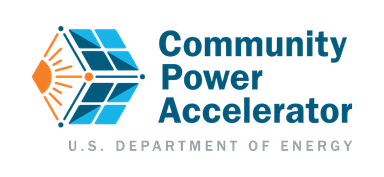Empowering American Communities Through Solar Energy
Join the Community Power Accelerator to connect with solar developers or capital providers and help bring affordable solar energy to communities across the United States.
The Community Power Accelerator Connects Solar Projects With Funding
The Community Power Accelerator supercharges community-serving solar projects, creating a direct pathway between innovative initiatives and the organizations ready to finance them.
We're powering a more resilient, affordable energy economy by connecting communities to the resources they need to access solar energy.
Our Mission
The U.S. energy economy is surging forward. Yet many communities lack access to affordable, reliable, resilient, and secure electricity that could be obtained through renewable energy technologies.
A critical circuit remains incomplete: many communities—especially low-income communities—can't find the funding needed for solar development. We close this circuit by addressing two critical challenges. First, many solar developers and community organizations lack the capacity and resources to prepare compelling funding applications. Second, potential capital providers often hesitate to support projects they think might be risky or difficult to evaluate.
Our platform generates the tools, training, and connections needed to overcome these challenges.
The U.S. Department of Energy's Role
The U.S. Department of Energy (DOE) powers the Community Power Accelerator's mission of expanding access to solar energy. Through ongoing platform development, technical assistance coordination, and impact tracking, the DOE ensures every stakeholder has the tools and support needed to succeed.
DOE maintains platform quality standards while amplifying community success stories to showcase the real-world impact of these initiatives.
The National Community Solar Partnership+
The National Community Solar Partnership+ (NCSP+) is a coalition of stakeholders working to expand access to affordable distributed solar to every U.S. household, while also enabling communities to realize the meaningful benefits of solar energy, which include access, household savings, energy reliability and resilience, community-led economic development, and solar workforce opportunities.
